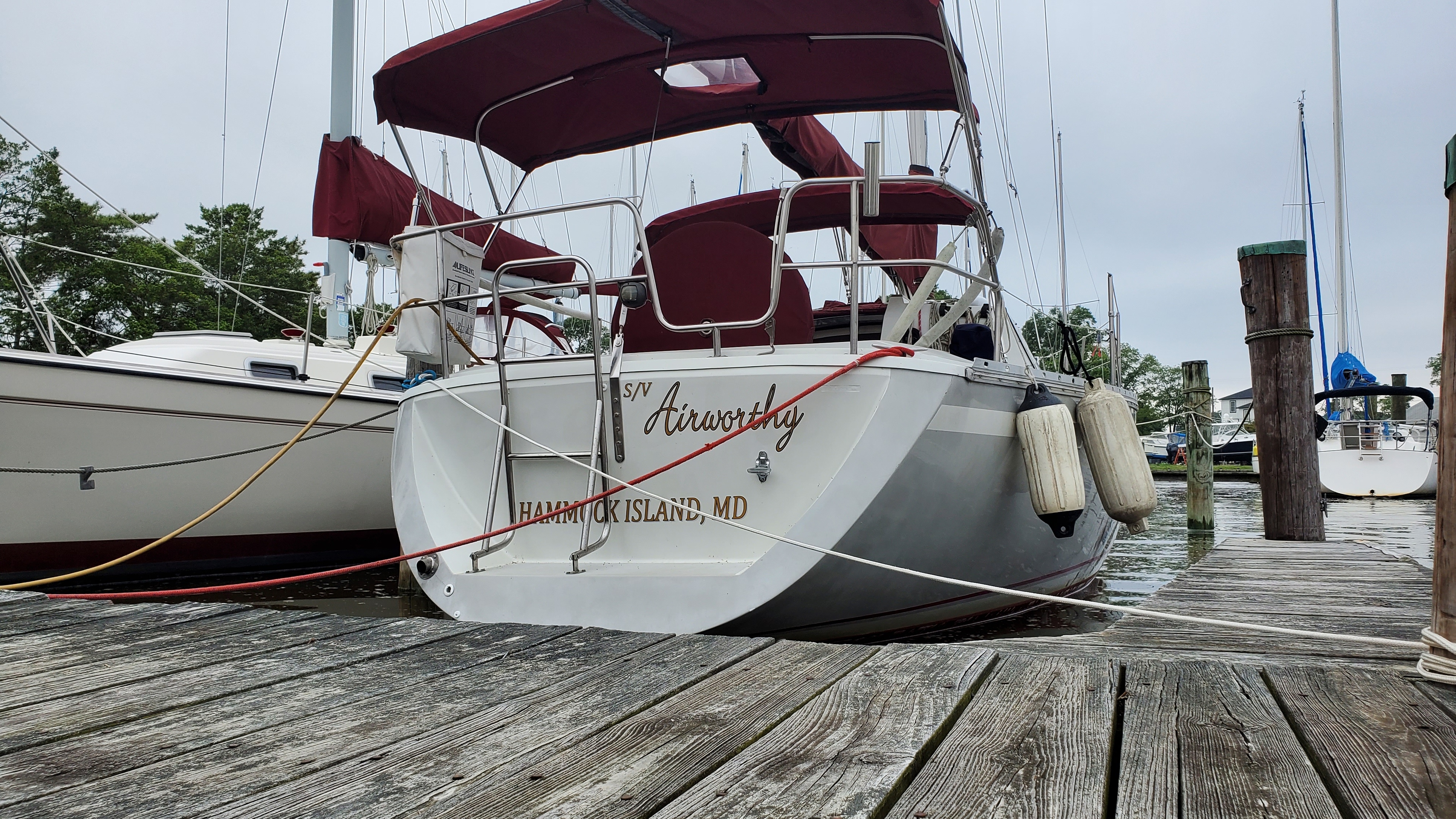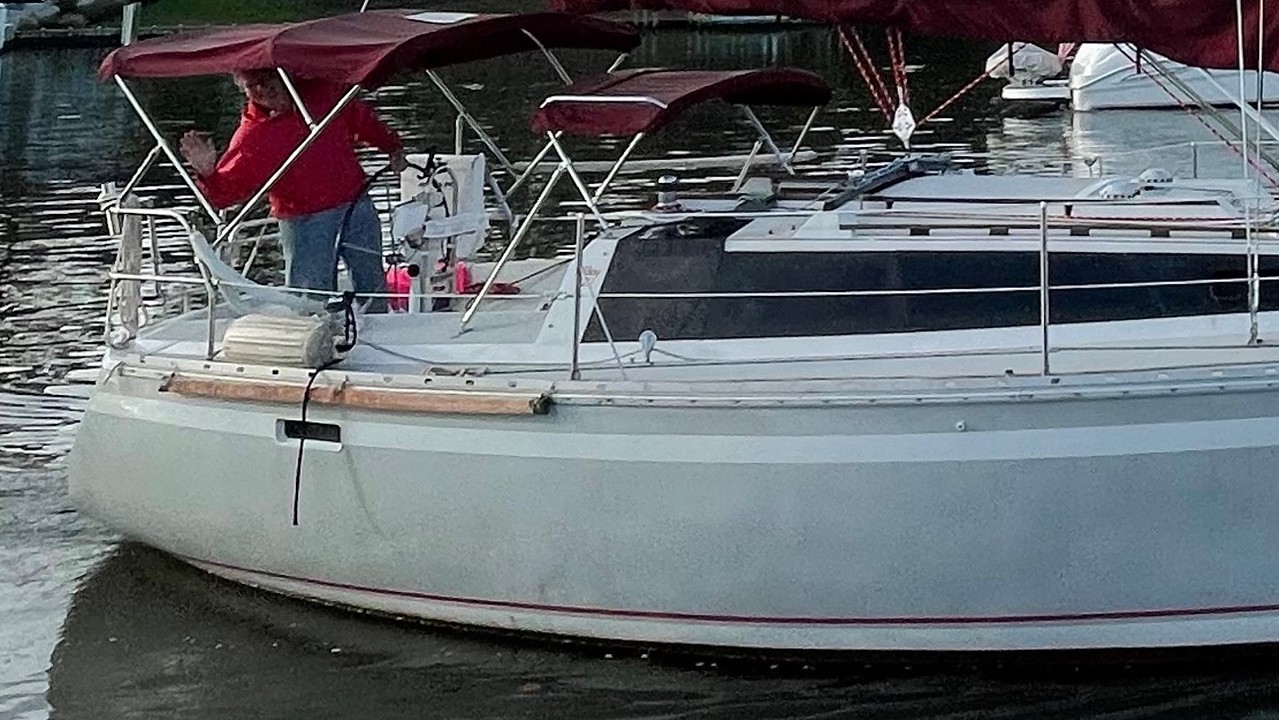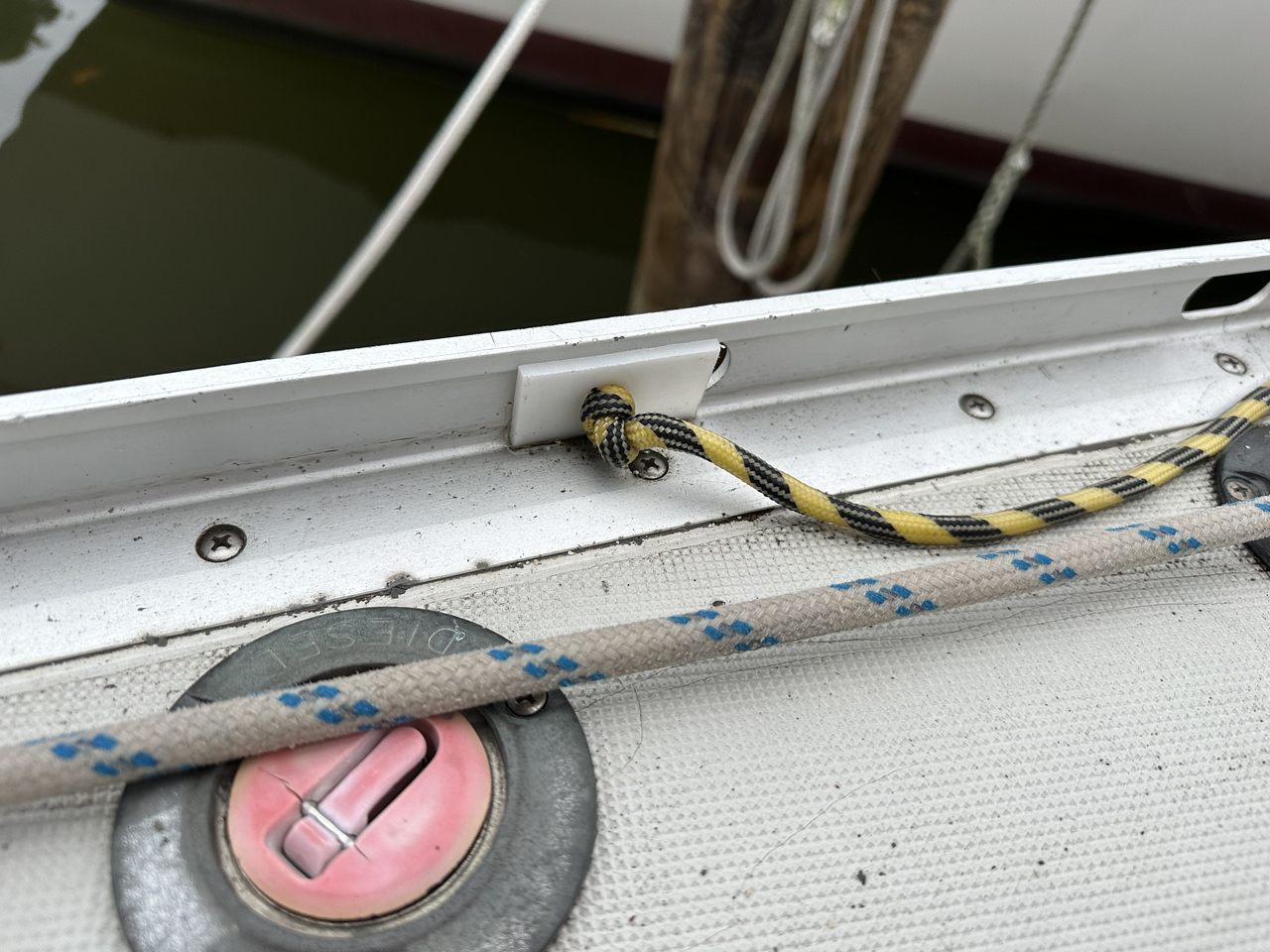The following videos show it done with a fixed length loop. Notice that BOTH ends go to midships.Essentially would be coming in - grap a bite of the secured mid ships spring line, try and loop the far most dock cleat and do a quick wrap of the running end?
Two different uses. Same idea.
In both cases the spring line puts the load midships. With the engine in forward, the boat will be pulled to the dock.
Because the cleat is at the middle, it pulls the boat somewhat evenly to the dock. Unlike what would happen if the line was towards the bow or stern.
When the boat is against the dock, if you keep it in forward, and the rudder turned away from the dock.. The boat will sit there nicely and you can step off and tie the other lines. No crew or jumping needed.
The above techniques use a loop of a preset length. Some people, including myself do it differently.
What I do: Line with a loop in the end->midships cleat used as a turning point->back to the winch in cockpit.
That way you still get a line that runs from the dock directly to midships, but allows you to adjust the length when docking.
The secret to fast and easy mooring: the midships spring - boats.com
A simple, pleasing technique for coming alongside and departing a pontoon – and yet it's so common to see skippers evidently unaware, says Rupert Holmes.
The trick with all this is determining the location for your midships cleat. I pick a calm day and experiment. Each boat design will have a slightly different location fore or aft that is best.
In the past I attached a lead to the toe rail, but you need to ensure it is strong enough.
Last edited:






 Anyone?
Anyone?